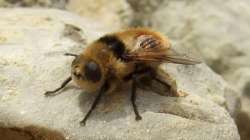What are botflies, how it can infect humans | Explained
The surgeons had to perform a surgery which involved removal of 3 live botflies which were almost 2 cm in size from her eye, all without anaesthesia.

Indian doctors at Fortis Hospital in New Delhi's Vasant Kunj diagnosed an American woman with a rare version of the disease "Myiasis". The surgeons had to perform a surgery that involved the removal of 3 live botflies which were almost 2 cm in size from her eye, all without anesthesia. The woman had recently visited the Amazon rainforests and appears to catch the disease from there. Upon feeling uneasiness in her eyes, she approached doctors in the U.S. who failed to diagnose the problem and gave her symptomatic treatment.
What are botflies?
The botflies are a class of dangerous parasitic insect species and belong to the group of insects called "Oestridae". They create skin lumps in human flesh and transmit eggs that fully grow inside the human body and feed on them causing itching sensations like ticks leading to Myiasis disease. If the botfly is not removed it can lead to the destruction of tissues causing rare Meningitis or death.
While Myiasis is a disease that involves infection of a young insect (before it becomes a fly) in contact with human tissue.
Here in the case, the US woman went to the hospital with the symptoms of redness and swelling along with tenderness in the right upper eyelid. She also told the doctors that she had been experiencing something moving inside her eyelids for the past 4-6 weeks.
Dr. Mohammed Nadeem, consultant and the head of the emergency department at the hospital told the press that it was a rare case of Myiasis and it needed to be evaluated in detail urgently.
In India, such cases are usually reported in rural areas, particularly in children in whom the botfly has entered through nasal openings or skin lesions.